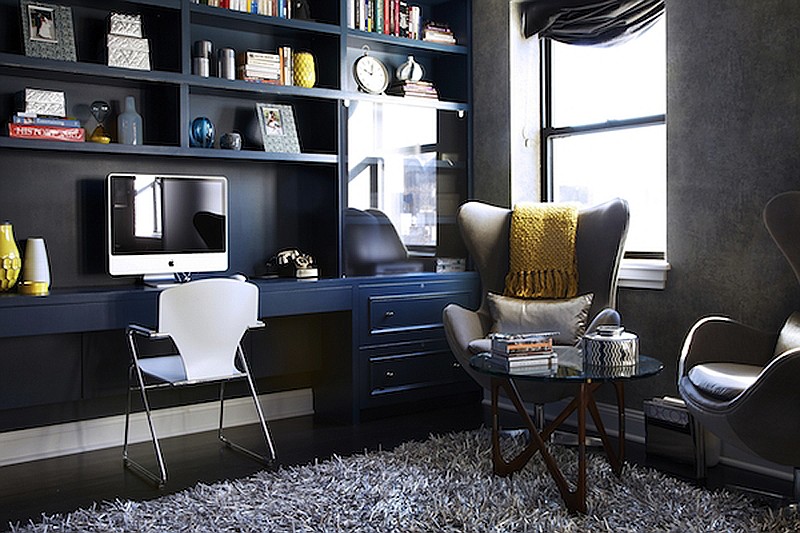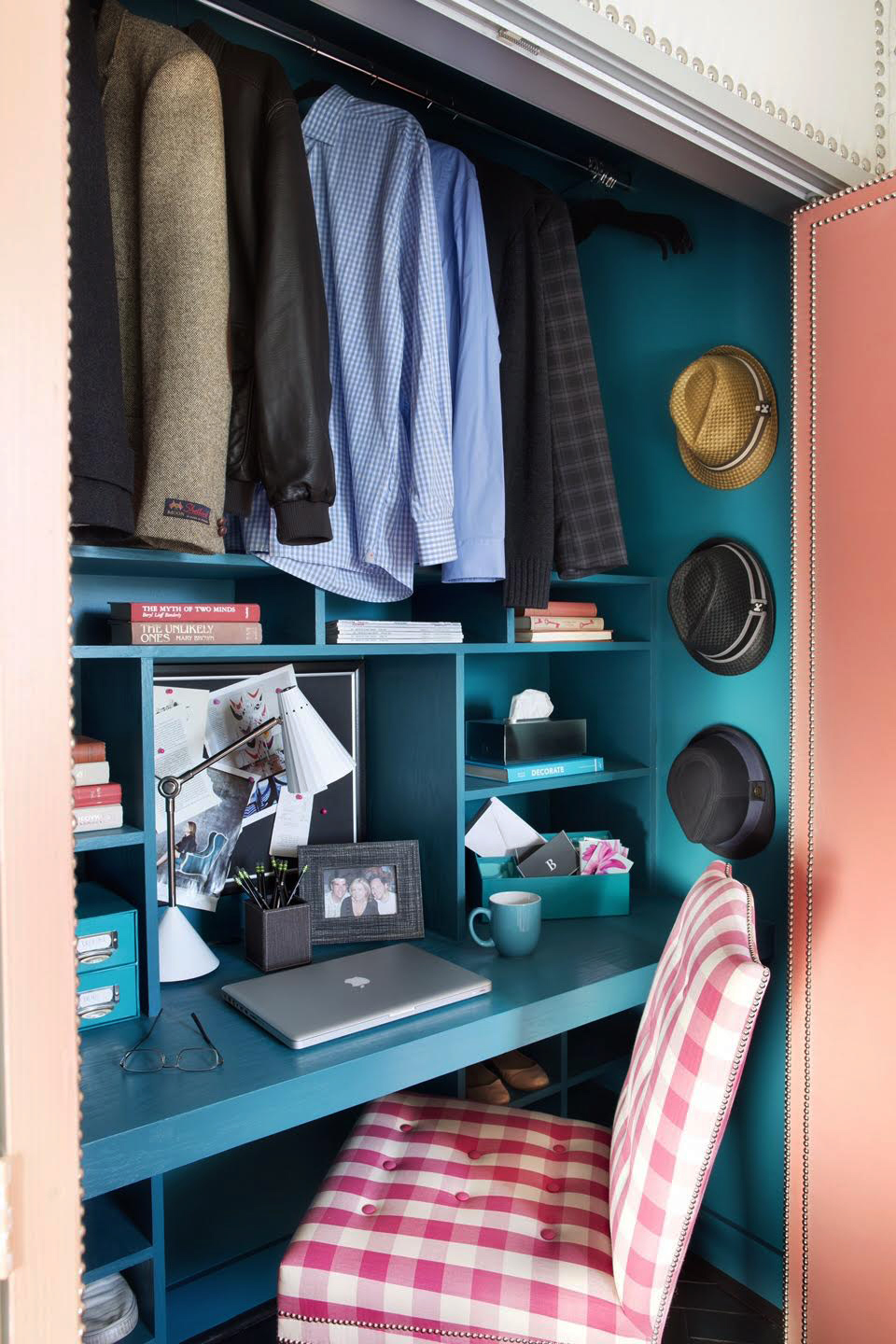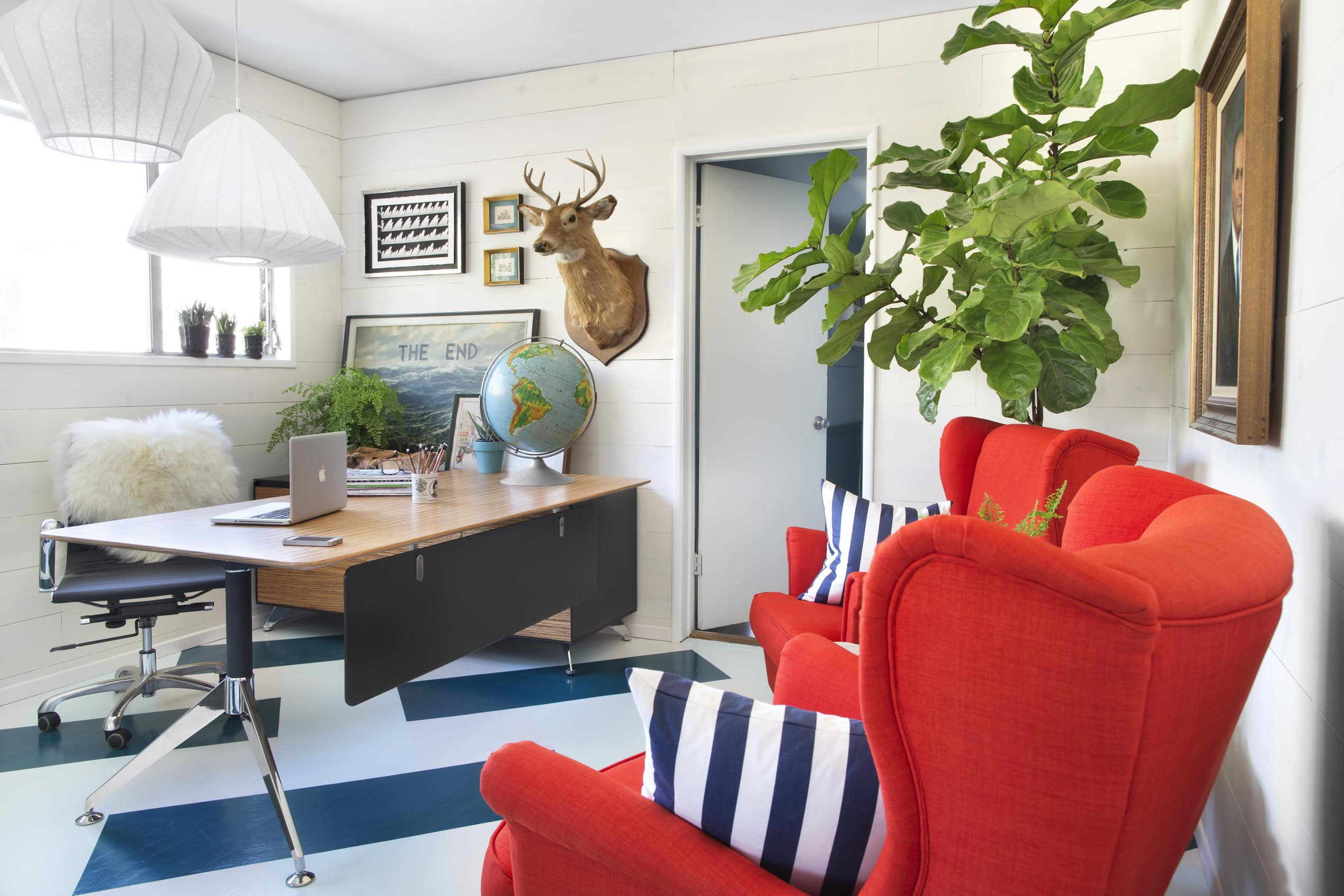Maybe you dash off work emails while making dinner, or you squeeze in a half-hour of work on a spreadsheet before bedtime. The line between "at work" and "at home" has become a blurry one for many people, and for others it has disappeared entirely. That makes a home workspace more necessary than ever.
Not every home includes a spare room available for use as an office, but design experts say that's not a problem: Today's streamlined technology means that just about any space can be transformed into an appealing and organized area for working.
"Walk into any creative corporation and you'll find the CEO sitting right smack in the middle of a large, open space along with almost every other key player," says designer Brian Patrick Flynn of Flynnside Out Productions. "This relaxed, informal atmosphere has become the norm, not just in corporate settings but also in the home."
Here, Flynn and two other interior designers - New York City-based Young Huh and Danielle Colding - offer advice on creating a home work area that's both practical and inspiring.
PART OF A ROOM IS PERFECT
With today's smaller computers and wireless connections, there's less need for a boxy desktop and connecting cables. A desk built into a wall of shelving and cabinets can often serve as a fully functioning home office.
So unless your work requires total concentration and silence, don't give up an entire room even if you have one available.
And built-in pieces don't have to be expensive.
"I turned dead space into a mini-home office by configuring Ikea kitchen cabinets and a laminate countertop as a tall workstation," Flynn says. "You can assemble it all yourself and have the counter cut to size at a local home improvement store." Once the pieces are installed, "it looks architectural, almost like it's always been part of the home."
Or installing these items in a bedroom closet creates a mini-office that can easily be closed off for privacy.
In a New York City apartment, Colding opened up the wall between the living room and a small bedroom that had been used as an office. She filled one wall with built-in shelving, cabinetry and a desktop, so the now-larger living room still offered a complete workspace. And she added a Murphy bed along that wall so the room could still accommodate an overnight visitor.
Another option: Buy a "secretary," a large piece of furniture with doors that conceal shelves and drawers.
"I love using secretaries because they have a drop-down tabletop that allows you to work, and drawers for storing things," Huh says, "but then you can close everything up when you are entertaining or want to hide your work mess."
CONSIDER MULTIPLE WORKSPACES
Start with a main space in a living room or family room where you keep files and items like a printer and landline phone. Then create convenient mini-spaces elsewhere in your home with just a small work surface, a chair and charging capability.
For example, Huh suggests replacing your nightstand with a tiny desk and chair next to your bed. Include a power strip and extra charger. And don't forget the analog option: Keep a paper and pen for scribbling down brilliant ideas that strike you during downtime or when you wake up.
In the kitchen, add a family workstation for e-mails, schedules, bills, etc.: "It ends up being the most-used area in the whole house," Huh says. "I usually install a bulletin board or magnetic board above the work space, and a drawer to hide papers, pens and an emergency Band-Aid or two."
Be sure each space has ample lighting, especially if you'll be working at night.
"Layered lighting is extremely important in a work space," Colding says. "You want a combination of overhead and task lighting."
And, she adds, "late at night, a great desk lamp is invaluable."
GO BOLD
Offices outside the home are often decorated in neutral or drab colors. But Flynn recommends bold or bright hues and fun patterns for home workspaces.
"There's something inviting that draws you in and even excites you about getting some work done if the overall look is fun," he says.
In a small space, white walls help.
"All white can make any cramped 'bonus room' instantly feel like a light and bright home workspace," says Flynn.
Huh says dark or intense colors also work in small rooms because they can make it feel like the walls are receding rather than crowding you.
DON'T USE OFFICE FURNITURE
For a desk that will be integrated into a living room or bedroom, look for pieces "that don't look like they belong in an office," says Huh. "Nothing from Staples or Office Depot. For a bedroom, consider a Parsons desk or a mirrored desk, because it's simple, and clean lines look like a vanity table."
A streamlined desk will look great in a modern living room, but Colding says contrast can be striking: "I do veer more modern with my selections," she says, but "there is also something to be said for mixing in a really lovely antique desk into a more modern setting."
All three designers recommend choosing items that express your personality and delight you.
"The key to creating a good home workspace is to make that space feel as though it's not really even meant for working," Flynn says. "Keep it decorative and fun and practical, and you'll never really feel like you're 'working' when you're working from home."


